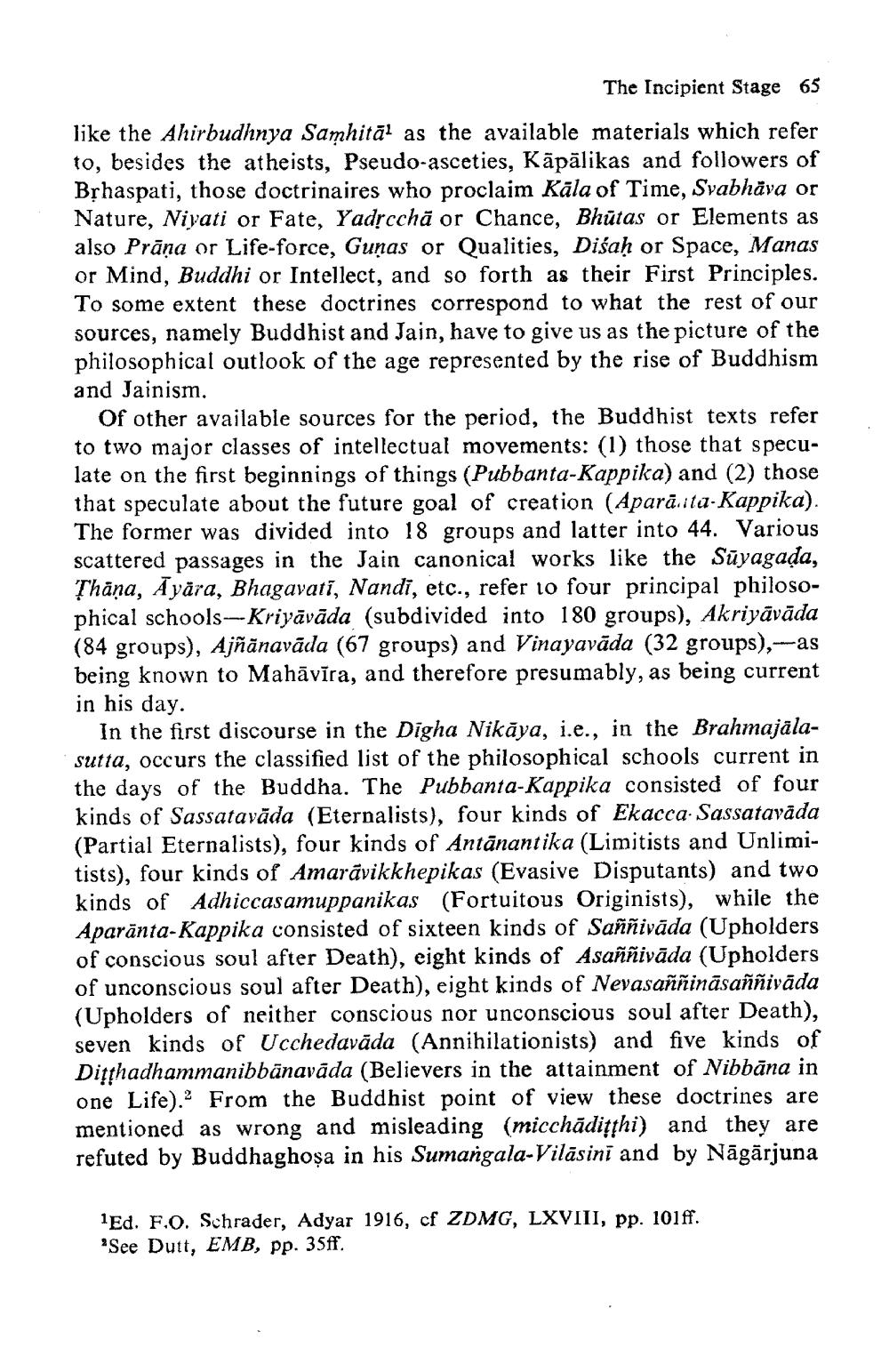________________
The Incipient Stage 65
like the Ahirbudhnya Samhitāl as the available materials which refer to, besides the atheists, Pseudo-asceties, Kāpālikas and followers of Brhaspati, those doctrinaires who proclaim Kāla of Time, Svabhāva or Nature, Niyati or Fate, Yadịcchā or Chance, Bhūtas or Elements as also Prāņa or Life-force, Guņas or Qualities, Diśaḥ or Space, Manas or Mind, Buddhi or Intellect, and so forth as their First Principles. To some extent these doctrines correspond to what the rest of our sources, namely Buddhist and Jain, have to give us as the picture of the philosophical outlook of the age represented by the rise of Buddhism and Jainism.
Of other available sources for the period, the Buddhist texts refer to two major classes of intellectual movements: (1) those that speculate on the first beginnings of things (Pubbanta-Kappika) and (2) those that speculate about the future goal of creation (Aparā.ita-Kappika). The former was divided into 18 groups and latter into 44. Various scattered passages in the Jain canonical works like the Sūyagada, Thāņa, Āyāra, Bhagavati, Nandi, etc., refer to four principal philosophical schools--Kriyāvāda (subdivided into 180 groups), Akriyāvāda (84 groups), Ajñānavāda (67 groups) and Vinayavāda (32 groups),-as being known to Mahāvīra, and therefore presumably, as being current in his day.
In the first discourse in the Digha Nikāya, i.e., in the Brahmajälasutta, occurs the classified list of the philosophical schools current in the days of the Buddha. The Pubbanta-Kappika consisted of four kinds of Sassatavāda (Eternalists), four kinds of Ekacca Sassatavāda (Partial Eternalists), four kinds of Antānantika (Limitists and Unlimitists), four kinds of Amarāvikkhepikas (Evasive Disputants) and two kinds of Adhiccasamuppanikas (Fortuitous Originists), while the Aparānta-Kappika consisted of sixteen kinds of Saññivāda (Upholders of conscious soul after Death), eight kinds of Asaññivāda (Upholders of unconscious soul after Death), eight kinds of Nevasaññināsaññivāda (Upholders of neither conscious nor unconscious soul after Death), seven kinds of Ucchedavāda (Annihilationists) and five kinds of Ditthadhammanibbānavāda (Believers in the attainment of Nibbāna in one Life).? From the Buddhist point of view these doctrines are mentioned as wrong and misleading (micchādițjhi) and they are refuted by Buddhaghoṣa in his Sumangala-Vilāsini and by Nāgārjuna
1 Ed. F.0. Schrader, Adyar 1916, cf ZDMG, LXVIII, pp. 101ff. "See Dutt, EMB, pp. 35ff.




